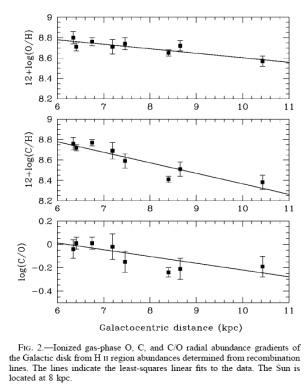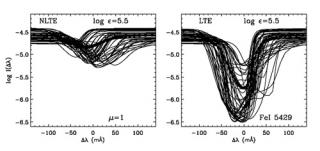
The galactic gradient of C has been determined for the first time using recombination lines in HII regions. Results from these lines are more reliable than those derived from the traditional collisional excitation lines, which are stronger but subject to variations of temperature in nebulae (Esteban et al., 2005, ApJ 618, 195). These results have made it possible to greatly limit the number of possible models for chemical evolution in the Milky Way.
Advertised on
